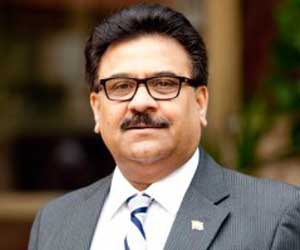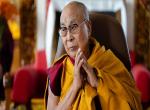Black seaside resort of Sochi is President Vladimir Putin’s favourite place to conduct most intricate and intense interaction in the serene and scenic environment with his key counterparts. Prime Minister Narendra Modi was his latest guest of honour for an informal Summit at Sochi. Only last month PM Modi and President Xi Jinping of China had ironed out key differences in an informal format that seems to have paid dividends through viable confidence building measures where instructions were issued at the highest levels to de-escalate the de facto tension and possibility of an untoward escalation that neither side really wants.
Fortunately with Russia, the underlying tension did not fall in this category. It was more to do with perception and a some trust deficit that had crept-in over the years due to changing global dynamics, and each side sometimes trying to expand its outreach with countries who are in direct diplomatic conflict with either India or Russia. Russia’s enhancing engagement with Pakistan and India’s increasing proclivity towards USA, especially in defence sector, appeared to be in direct contrast to the hitherto held beliefs wherein each side seemed to have taken the other for granted.
International Diplomacy has its own dynamic. Onset of President Trump and his somewhat unpredictable knee-jerk policy reactions tweeted and the resultant concomitant non-reliability appear to have created tremendous concern among its partners and targets alike that militates against the standard norms of international interactions and outcomes. Russia has emerged as a target by the US deep state and sanctions have become the order of the day that obviously dictate a realignment of friends and interests. USA’s withdrawal from the Nuclear agreement, the Joint Comprehensive Plan of Action (JCPOA), with Iran and the most stringent sanctions impending against it have further compounded the Russian and Indian dilemma over their implicit interests that will be directly and adversely impacted by these sanctions, apart from endangering the global and regional peace. It was in this backdrop that President Putin invited PM Modi to Sochi for the informal Summit on May 21.
It was in 2000, after Vladimir Putin had been appointed as the President of a struggling Russia, when during the State visit of the then Prime Minister Vajpayee annual summits between the two leaders had started with the purpose of elevating the strategic partnership. Thus began the dozens of interactive mechanisms to address various mutual concerns, be it for trade, hydrocarbons, investments, rupee rouble issues, technology transfer, space and nuclear cooperation, as well as the whole gambit of defence cooperation as India’s arsenal accounted for almost 70 percent of Soviet/Russian origin equipment.
Narendra Modi, as the Chief Minister of Gujrat, had signed the twinning cooperation agreement between his State with Astrakhan during the Vajpayee visit. Even then he was very inquisitive about Russia. Overtime, the two strongest leaders have developed tremendous mutual respect and bonhomie. This was clearly evident when the two leaders discussed matters by themselves and President Putin breaking protocol to see off PM Modi at the Sochi airport. Such informal interactions at the highest level tend to be more productive and lasting as they also generate the requisite mutual trust between the leaders apart from addressing the key issues of mutual concern sometimes through out of box solutions.
It is a given that over the years, Sino-Russian relations have acquired much intensity and depth. However, it is also in Russia’s interest that the bilateral relations between its two closest strategic partners, China and India, remain unencumbered and cordial at the least so that they could have some convergence on the uncertain and unstable global threats and situations as it has already been witnessed across the regional and global spectrum on cantankerous issues. Hence after the Wuhan Summit it was really opportune for the Russians to likewise engage India.
The Ministry of External Affairs (MEA) statement prior to the visit stated, “ It would be an important occasion for the two leaders to exchange views on international matters in a broad and long-term perspective”. One could easily guess the areas of concern, i.e. US-Russia relations, India-US-Russia relations, situation in the Middle East including the Gulf Crisis, Syria and Palestine, US-North Korea rapprochement or lack of it, Afghanistan, Pakistan ( in the context of terrorism), Indo-Pacific rivalry and Chinese and US posturing, and above all, impact of US action on Iran that impinges on both. Underlying is the concern as to how India could continue to procure vital defence and technology systems from Russia including the S-400 Triumf air defence system at a cost of around US$ 4.5 bn and joint production of Kamov-226 T light helicopters, stealth frigates and nuclear powered submarines, import oil from Iran and meet other strategic requirements since both Russia and India have very close relations and projects with Iran, and paying for all these. Payment mechanisms have to be decided in a format that averts the direct impact of sanctions. That was done the last time with the assistance of the Russians but this time Russia is in the dock too.
As Russia and India collaborate in the trilateral Russia, India, China (RIC), plurilateral Brazil, Russia, India, China and South Africa (BRICS) and multilateral Shanghai Cooperation Organisation (SCO), UN etc., apart from various intense bilateral engagements, the question remains whether the countries are capable of settling the accounts by devising their own Special Drawing Right (SDR) mechanisms or through their own currencies and banking system, so that adverse short and medium term impact of the sanctions by western countries on either of the partners could be alleviated. It is quite likely to have been discussed between the two leaders as US might invoke the Countering America’s Adversaries through Sanction Act (CAATSA) against India’s major defence purchases from Russia. On the other hand, sanctioned and stressed Russia wishes to secure its major markets.
Apart from the standard jargon, the MEA statement underscored the agreement among the two leaders to strive for a multipolar world order, for which they will intensify coordination and consultation, especially under the aegis of the multilateral organisations they are part of. They shared the view that India and Russia have an important role to play in contributing to an open and equitable world order. In this regard, they recognised each other’s respective roles as major powers with common responsibilities in maintaining global peace and stability. They paid specific attention to energy and economic cooperation even as in 2017 trade increased by 20 percent and almost by 40 percent in the first four months of 2018, which is a good sign. It was agreed to institute a Strategic Economic Dialogue between NITI Aayog of India and the Ministry of Economic Development of the Russian Federation, to identify greater synergy in trade and investment. The two noted with satisfaction the expanding cooperation in the energy sector and in this regard, welcomed the arrival of the first consignment of LNG next month under a long-term agreement between Gazprom and GAIL. The two leaders also reiterated the significance of longstanding partnership in the military, security and nuclear energy fields and welcomed the ongoing cooperation in these areas. They also paid specific attention to the program of cooperation in fighting extremism, terrorism and separatism.
Unlike with China where the two separate statements appeared to give a divergence in the content and approaches, with Russia it was broadly on the same lines. However the sole exception that did not figure in the Indian statement was with regard to Organisation for Prohibition of Chemical Weapons (OPCW). Reportedly, Russian Finance Minister Lavrov mentioned that Russia and India had confirmed that they will strongly oppose the politicisation of the work of OPCW. That was indeed of greater importance to Russia, given the UK incident and investigation into alleged chemical attacks in Syria.
This informal Summit will be followed up by Putin-Modi interactions at the SCO Summit in China, G-20 and eventually the bilateral Summit in New Delhi later in the year. That should firm-in the informal yet extremely important understandings into action oriented roadmap between the two countries enjoying the special and privileged strategic partnership. It is imperative that each other’s sensitivities be respected, and if possible, must be seen as ‘redlines’, even if our essential interactive discourses with the other international players is predicated on our own national interests.
Free and honest exchanges at the highest level tend to dent any negative perceptions. Russian Foreign Minister Sergei Lavrov called the Modi-Putin talks as “long, frank and friendly”. It is sincerely hoped that the perceived ‘Hitchki’ loke hiatus in the Indo-Russian relations will be converted to fluency of discourse for the mutual benefit.
(Ambassador Anil Trigunayat is the Distinguished Fellow at the Vivekananda International Foundation)
(The paper does not necessarily represent the organisational stance. The author certifies that the article/paper is original in content, unpublished and it has not been submitted for publication/web upload elsewhere, and that the facts and figures quoted are duly referenced, as needed, and are believed to be correct).
(The paper does not necessarily represent the organisational stance... More >>
Image Source: https://www.foreignbrief.com/











Post new comment